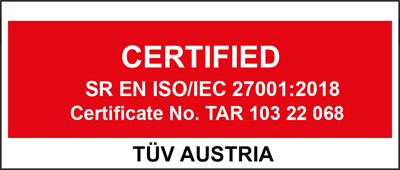Blog

How to write standard operating procedures, step-by-step
What does a business need to be successful? A strong vision? Talent? Amazing customer service? Luck and opportunity? Any person remotely knowledgeable on business would say that a business needs all of the above, and more, to achieve true success. However, all the opportunity and resources in the world can be quickly squandered without effective organization.
Think about it: ideas get lost when you don’t write them down, loose bits of paper with scribbled ideas get thrown away and so on... Meanwhile, having a bullet list in a document titled “My ideas” on your computer’s desktop or on your phone, means that you will always have your ideas on hand. Same goes for the other things on our list: without proper organization, vision and talent can be wasted, customer service can cause you more problems than it solves, and opportunities can go unrecognized because you have to deal with crisis after crisis.
The real-life, actual consequences, are a nightmare for any business owner: lost productivity, low morale, stress, lost or dissatisfied clients, high staff turnover and huge costs with recruitment and training.
Now, let’s be honest. You might be the type of person who enjoys seeing their ideas come to life but who does not feel comfortable with the slow pace of planning, organizing, or supervising. Thankfully, there is a solution: if you use operating procedures in your company, many activities will essentially take care of themselves, while you focus on innovation.
However, before you get there, you – or your staff – have to become savvy at writing clear, effective procedures. These will detail, in a step-by-step way, how the different activities in your company should be carried out, in each department. Ideally, each aspect of your business will be documented, clearly organized and stored, and – if you use a smart procedure management app like SOP – at your and your employees’ fingertips, as easy to access as a simple file on a computer’s desktop.
How do you write an operating procedure?
Writing clear and effective operating procedures requires taking a few steps, which can get pretty complicated if not done carefully. To help you organize your company policies and activities into the most relevant procedures, we have prepared a list of detailed steps to guide you. Read them carefully, then download our Procedure for Procedures to use as a template when writing your procedures.
1. Define the purpose of the operating procedure
What is the purpose of your procedure? Think about what you want it to achieve. Let’s say, for example, that you want to write a procedure for the onboarding of new employees. The procedure will describe, in detail:
- standard activities for this process and their purpose
- who is in charge of the activities (HR department, training department, managers etc)
- when and where the activities take place, how long they should take, what is needed to perform them, and any other relevant details.
2. Find your audience
This is a very important aspect in writing an operating procedure because it will help you decide which documents or working tools you will need to include and explain in the procedure. Be exact – think about how some activities might be performed by different employees at different times, or supervised by one or more people. Include everyone that is involved in the process described by the procedure, even if their role is small.
3. Discuss the procedures with your team
While you might think that you know everything about how your company does things everyday, this cannot be true unless you do everything yourself. If your business operated without procedures for a while, your staff might already be doing things in a way that works for them. Writing procedures about how you think things should be done might bring on important and unneccessary changes in your employees’ activity. Other times, changes are needed to improve performance. Discussing your new procedures with your team gives you the opportunity to include important details in the procedure, and to evaluate and improve how things are done.
4. Check your files
Don’t forget to check whether the activities you will describe in your new procedure are already documented in one form or another. You might find an old email that explains a certain activity, a manual or files with written instructions that could be included in the procedure. If these are not useful anymore, at least you will be able to see how things changed in your company over time!
5. Choose a format
The complexity of the activities described in the procedure dictates its format:
- For simple, repetitive tasks, where activities do not vary, choose a simple list with numbered steps or bulletpoints (for example: the steps necessary to register documents)
- For activities with several possible scenarios, choose a flowchart to guide employees through different circumstances.
- For processes that branch out into more detailed activities, you can choose a hierarchy format.
6. Evaluate the procedure
Before making the procedure official, make sure you have included the correct and complete information. Ask the support of the staff to check whether the procedure makes sense to them, and use their recommendations to improve it. Test the procedures out with the help of new employees.
Of course, procedures will change over time, and you will have to add more, as your company develops. Therefore, it is even more important to use the right tools to manage your procedures.
As a procedure management system, SOP helps you find, create, and change your procedures in just a few clicks. No messy file system, no printing manuals with hundred of pages or emailing procedures back and forth to employees. Through SOP’s system of automatic notifications, your employees know instantly when procedures change, they have them on hand with the advanced search functionality, and you save time, energy and money by streamlining your business’ workflows and processes. Not convinced? Check out our demo and see for yourself!





